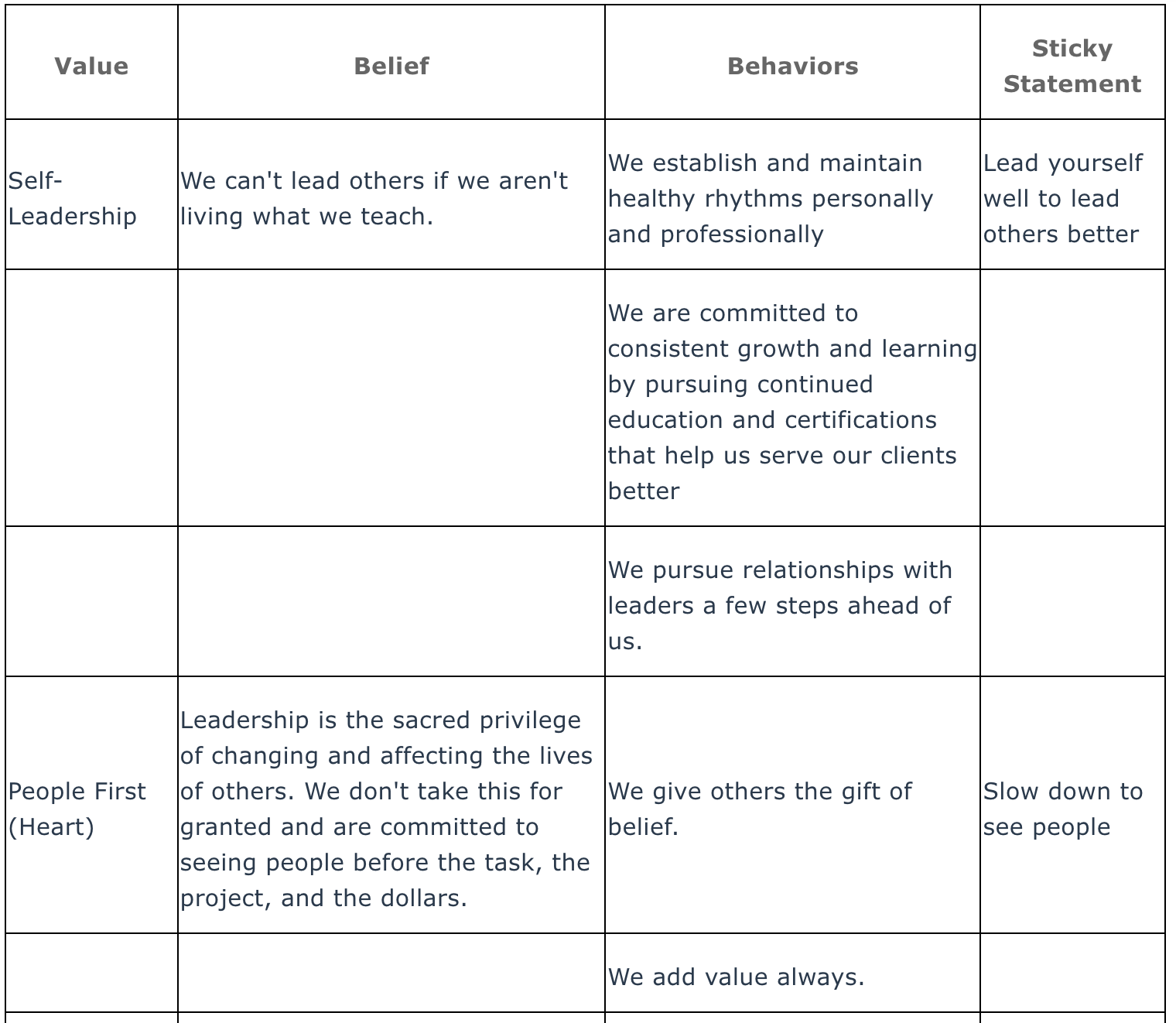4 parts to defining your core values
 Adobe Stock
Adobe Stock
In our LeadCulture framework, I define culture as: who we are and how we work together to achieve our mission.
Notice that there are two key phrases in this definition:
- Who we are
- How we work together
The first part is typically pretty locked in for most organizations. It's your purpose—why you do what you do, often described in a mission statement and supported by distinctives that set you apart from your competitors. Most organizations do good work bringing clarity to this.
It's the second part that I see leaders leave to chance. Most leaders have an intuitive sense of "How we do things around here," and assume this is understood by others. Sure, astute team members pick up on these unwritten expectations for how to succeed in your organization and, by and large, we get away with this organic approach to culture shaping until growth creates complexity that leaves this vague understanding untenable.
That's when you find yourself saying things like:
- "I don't understand how they didn't know that"
- "We've always done it this way"
- "I would never say that to a customer"
One of the anchor tools in our LeadCulture framework is what we call the Values Grid. The Values Grid helps you define how you work together. More than just a list of 5 core values, the Values Grid pushes you and your team to consider the values that really guide how you work, and then expands upon those values by providing three additional core elements that bring your values to life.
Let's look at the 4 parts of the Values Grid:
- The Value. Nothing flashy here … just one word or short phrase that is important to you. Examples might be: servant leadership, collaborative communication, humility, fun.
- Belief Statement. This statement forces you to synthesize why this value is important to you and your organization. Research confirms that we're typically only going to remember 3-5 core values, so we better choose values that have deep meaning. The belief statement puts language to your conviction for why this value is critical.
- Behaviors.What does this value look like in action? For example, the value of "excellence" may mean something very different to you than to another team member. For each value, write 3-4 behaviors that help team members understand what this value looks like in action.
- Sticky Statement. We remember values when we make them memorable, either via stories or language that provides a picture. Make your values memorable by crafting language that recalls a specific story or conjures an image that makes it distinct.
By way of example, here is a slice of the 4Sight Team Values Grid:

| Jenni Catron is a writer, speaker, and leadership coach who consults churches and non-profits to help them lead from their extraordinary best. As Founder and CEO of The 4Sight Group, she consults with individuals and teams on leadership and organizational health. Learn More » |
More on Vision & Culture
- Open borders or compassionate order? (by Bob Russell)
- They tried to quiet Charlie Kirk—but the gospel still speaks (by Bob Russell)
- What can Christian leaders learn from a 20-something YouTuber? Quite a lot… (by Zac McGowen)
- Steps to Launching Your Personal Workplace Ministry (by )


